You know what it’s like. You look in the closet, and see that well-worn leather jacket hanging there. It keeps you warm, you know it makes you look good, but it’s showing its age. The zipper might not work so well or a pocket lining might be a bit torn. You take care of it – it’s been repaired and cleaned many times. You’ve been thinking about getting a new one, but you can’t find one anywhere, because styles and materials have changed over the years. So you keep wearing it and wearing it and wearing it.
AvGeeks know that there are a few airplanes that are like that. Love ’˜em, can’t replace ’˜em! The venerable Douglas DC-3 is one. Never duplicated, and still flying with airlines like Buffalo Airways of ’œIce Pilots NWT’ fame, even though the last DC-3 rolled off the assembly line in 1947.
The deHavilland Canada DHC-6 Twin Otter is another. Amazing Short Take Off and Landing (STOL) capability, twin bulletproof Pratt & Whitney Canada turboprops, decent cruise speed, has 19 seats, or it can carry a whack of cargo. The final Series 300 ’œTwotter’ was produced in 1988 at the DHC plant in Toronto. Over 800 Twin Otters were produced, and 600 are still flying on land, sea and snow, from pole-to-pole and on every continent. An amazing statistic. Operators said that the only thing that can replace an old Twin Otter is a NEW Twin Otter. But new ones weren’t available, so operators kept flying them and flying them and flying them.
Enter Viking Air, based in Victoria, British Columbia, Canada. Viking had decades of experience in aircraft sheet metal fabrication. They made new factory spare parts for deHavilland Canada (DHC) for new build and in-service planes. DHC was acquired by Boeing in 1982, and in 1983, Viking obtained the rights to sell parts directly to DHC-3 Otter and DHC-2 Beaver customers. Then Boeing sold the DHC operation to Bombardier Aerospace in 1992.
In order to provide better service to operators, Viking ultimately became an official ’œCustomer Service Centre’ for the Twin Otter. This gave Viking the rights to manufacture and provide parts directly to the planes’ operators. With the size of the Twin Otter fleet, Viking began to see how valuable the spare parts business was to their company. They started thinking about getting the Type Certificate (TC) to the Twin Otter. This would give them full ’œownership’ and responsibility for the design. And given Viking’s long experience with the Beaver and the Otter, they wanted to get the TCs for those planes, too.
Bombardier Aerospace held those TC’s. Bombardier had evolved over the years and was now focused on building the efficient and quick Q400 turboprop, which is the most recent version of the DHC-8 Dash 8, along with the CRJ- line of regional jets and a wide range of executive and special mission aircraft. The older planes weren’t part of their plans. When Viking approached them, Bombardier said, ’œYou want the Beaver, Otter and Twin Otter Type Certificates? OK, but you’ll have to take the TCs for ALL of the out-of-production DHC planes.’
It was one heck of an opportunity. In 2006, Viking became the proud owner of the TCs for the DHC-1 through to the DHC-7. Those planes are really known as the Chipmunk, Otter, Beaver, Caribou, Buffalo, and Twin Otter ’“ like a walk through the Canadian wilderness. But then I think the DHC marketing folks got too serious, and the DHC-7 was named…wait for it…the ’œDash 7’.
Not long after Viking obtained the TC’s, Twin Otter operators had an ’œa-ha’ moment. They went to Viking, and said, ’œYou can make all of the parts for a Twin Otter, so why don’t you make a NEW Twin Otter?’ Viking’s President, David Curtis, and his team considered it….why not, indeed!? They had the TC for the plane, so they could put the Twin Otter back into production.
The Twin Otter Series 400 is launched
Viking responded by hosting a ’œTwin Otter Operators Forum’ to see what the operators wanted, followed it up with market research, and officially launched the Series 400 in 2007.
In my opinion, Viking was very smart when they presented the Series 400 to prospective customers. They promised a plane that was structurally the same as the Series 300, with consistent performance. We’ve seen aircraft builders fall short of the performance promises of new aircraft. Not so for the new Twin Otter. Operators knew what their existing planes could do. The Series 400 would do the same, but be brand new and improved.
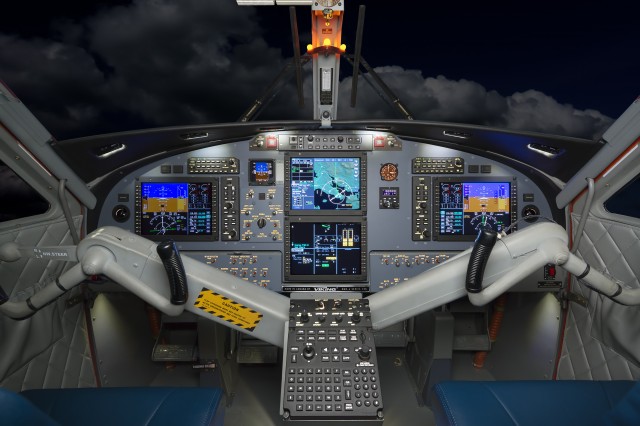
Twin Otter Series 400 – Honeywell Primus Apex Avionics. Engine controls? On the overhead panel.
Photo: Viking Air
There are over 800 changes in the Series 400. The main upgrades are to the internal systems, along with more powerful Pratt & Whitney Canada PT-6 engines, and a remarkably capable avionics package. The new ’œflat panel’ Honeywell Primus Apex fully digital, integrated avionics suite makes just about every pilot go ’œOOOoooooh’ when they see it for the first time. I did.
Some operators were concerned about the performance of the new digital avionics package in the harsh conditions that many Twin Otters see on a daily basis. After all, some of the planes rarely fly from a paved runway, if ever. So Viking took the step of sourcing the same displays that are found in military main-battle tanks, and then they tested the whole package even more.
If you’ve ever been in a floatplane on rough water, you know how much abuse the plane has to take. The number of avionics components has been reduced to a handful, from dozens and dozens in the older planes equipped with ’œround steam gauges.’ Makes maintenance a whole lot easier, along with the built-in redundancy of flat panels. Information can be moved from one panel to another, or the panels themselves can be easily swapped.
Major fabrication of the components for the Twin Otter takes place at Viking’s facility in Victoria. Other parts come from key Canadian suppliers, and the final assembly takes place in Calgary. Viking has almost 600 employees, with close to 400 working in Victoria and the balance in Calgary. Right now, they’re building a new plane every 14 business days, and ramping up to 24 deliveries a year. There are 80 firm orders for the Series 400 with 25 aircraft delivered, so production is committed into mid-2015. The completed planes are flown from Calgary to Spokane, Washington for painting, and then to Victoria. Final flight testing and certification takes place, customers’ options are integrated into the planes, and then the customer takes delivery of their brand-new Twin Otter.
The first delivery of a Series 400 was in July 2010 to Swiss utility operator Zimex, which uses the Twin Otter to support oil and gas exploration in Africa. The first airline delivery was to Air Seychelles in early 2011. The first airline to operate the new Twin Otter on floats was Trans Maldavian Airways. The plane flew from Victoria to the Maldives, in the middle of the Indian Ocean, on an epic 16,000 km (10,000 mile) delivery flight. It flew on wheels, and it was transferred to floats when it arrived.
Other customers for the Series 400 are varied. Armed forces, such as the U.S. Army, Vietnam Navy, and the Peru Air Force have taken delivery, or have orders. The planes are going to airline and utility operators around the world, many of which currently operate Series 300 Twin Otters. Some are being completed with corporate interiors – I’d love to see one of those.
The feedback from operators has been very positive. They love the Series 400, and consider them to be the workhorses of their fleets. Viking has already had customers return for further orders after having received their first aircraft. And I’m told that interest in the Twin Otter is increasing quickly ’“ on just one day last week, Viking had 3 inquiry calls before noon.
But wait, there’s more!
Many aerospace companies supply other manufacturers, as does Viking. They provide sheet metal parts to Bell Helicopter ’“ they’re a Bell ’œCertified Supplier’. And if you want to convert your round-engine piston-powered Beaver or single Otter to turbine power, Viking will be more than happy to do the work for you.
We’ve all watched military aircraft procurement programs take interesting twists and turns, often politically-motivated, and get stretched to lengthy timetables. Missions and crews bear the brunt of the delays. Alas, Canada is part of that club. Among others, there’s a program called the Fixed Wing Search and Rescue Project. (FWSRP). Started in 2009(!), the program’s intent is to replace Canada’s aging CC-115 (DHC-5) Buffalo Search and Rescue (SAR) planes, and legacy CC-130 Hercules.
Viking has proposed a Next Generation, new-production version of the Buffalo for the FWSRP. As with the Series 400 Twin Otter, many system upgrades would be incorporated into the DHC-5NG. The plane would have an advanced flight-deck and a new engine and prop combo, the same Pratt & Whitney Canada PW150 and 6-bladed prop as on the Bombardier Q400. Who knows how this program will ultimately turn out, but it would be great to see a new Canadian-built aircraft fulfilling Canadian SAR & military missions.
And then there’s the Dash 7. Boring name, but an amazing plane – 4 engines, 50 seats, and STOL performance. Over 100 built, and about 40 still in service. I’ve got some personal history with the Dash 7 in the photo. I was working on my pilot’s license at Toronto Island Airport in the late 1970’s. One day, I was in a 2-seat Cessna 150 approaching the runway behind the Dash 7. The pilots were demo-ing the plane’s STOL capability at the downtown airport. The Dash 7 touched down, stopped really quickly, and turned onto a taxiway just past the runway threshold. My turn. I went floating past the Dash 7, finally stopping and turning off way down the runway. Embarrassing. As I taxied in, I watched that STOL plane back into a spot on the ramp using reverse pitch on the props ’“ show-off! After I finished my lesson I saw that the flight deck window was open, so I went over and told the Dash 7 pilots my story. They laughed and welcomed me on board. Then they asked if I wanted to sit on the flight deck jump seat for the short flight back to the factory at Toronto’s Downsview Airport. Yes, sir! What a great flight.
As a Canadian AvGeek, I’m really pleased to have reported on an aviation success story that’s pretty well in my own backyard. Now I wonder what could happen if Viking Air got the TC for the Avro Canada Jetliner…??
AvGeek PS ’“ Yes, I know that there are turbine conversions of the DC-3, such as the Basler BT-67. But none of those are ’œnew-builds’ like the Series 400 Twin Otter. Thought you had me?
 |
This story written by… Howard Slutsken, Correspondent.
Howard has been an AvGeek since he was a kid, watching TCA Super Connies, Viscounts and early jets at Montreal’s Dorval Airport. He’s a pilot, and gets away to fly gliders whenever he can. Howard is based in Vancouver, BC. |

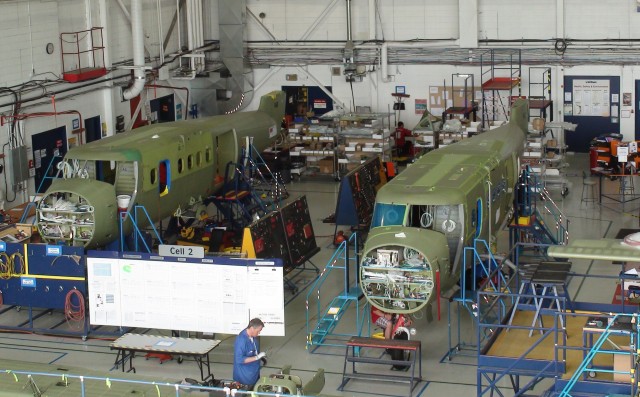
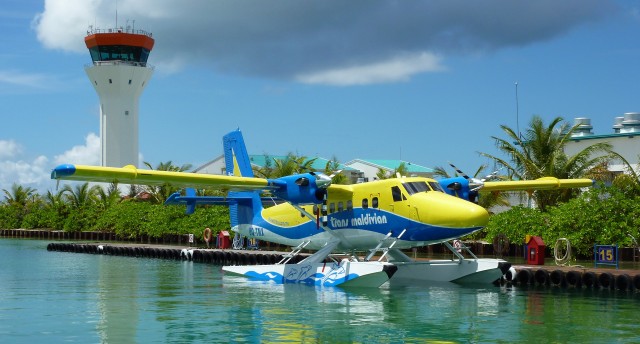
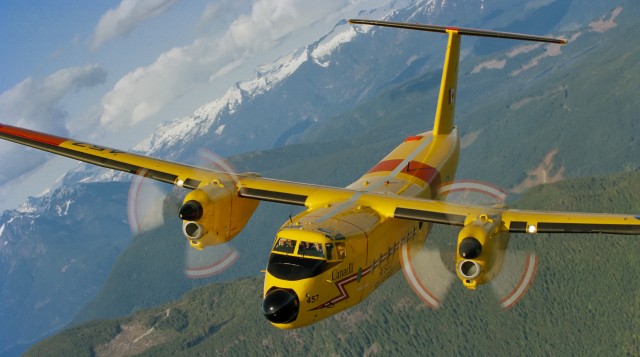
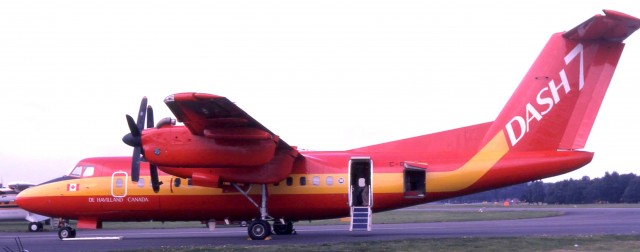
What a great story Howard! Love your “voice” while staying true to the facts. Really enjoyed reading this piece on the Series 400, and trust me, I get to read them all. 🙂
Thanks Angie for checking out the story.
Viking Air provides a unique story and we hope to work with you guys more in the future.
David
I used to fly as a passenger on the twin otters of Air New England and Executive Airlines around New England – I remember freezing or sweltering depending on the season, and loving the fact that there were no visual obstructions except the wing struts and wheels. I would love to fly on one these birds again – tough as rocks and a joy to fly in.
Any reasonable guess on a price for the Executive version fully equipped?
I really wouldn’t want to speculate, Tom. Give the folks at Viking Air a call – they’d be happy to sell you one!
Great article!
I love the idea of a Canadian made FWSRP.
Sounds like a no brainer to me.
Once saw at the London ON. airshow back in the mid 80’s the short take off and landing abilities of the Buffalo. Simply awesome.
Why complicate things when we have a great design already.
Let the social media campaign begin for a new Buffalo FWSRP.
Nice Article..
I’m looking for used twin otter for sale, year manufacture is 1990 above, anyone can help me for this? ASAP.. thx before
Hello, Novianto,
Are you looking for a used Twin Otter made BEFORE 1990? The last Series 300 was produced in 1988. But I will forward your comment to my contact at Viking Air.
I’m happy that you liked the story!
hi Howard, I’m from Philippines… we would to purchase or lease a Viking 400, we’ll be needing at least 10-14 units… we are on the stage of putting up an maritime aviation business like in Maldives. I hope you can help us… my email address would be wc******@gm***.com thank you
That is nice
I was wondering if the Buffalo could be upgraded and use Canadian ingenuity and labour. I knew part of the Viking story from watching the news about Vietnam purchasing Viking aircraft for Maritime patrol.
Come on Mr. Harper, this is a no brainer, Calgary is your home base.
Keep jobs at home and keep our aircrews safe.
Great article! So glad my favorite airplane is back in production. I was privileged to fly Twin Otters in the Caribbean for Eastern Metro Express in 1986 and ’87. The airplane is an absolute blast in every way. I don’t think I’ll never be able to top the experience. : )
Thanks, Billy – and I think you’d find the Series 400 the same, but even better!
I need the price for Viking 400 with 20 to 25 seats. This is for someone in India.
The Twin Otter only seats up to 19 passengers, but please contact Viking Air directly at in**@vi*******.com.
I flew Twin Otters for Air New England during the 70’s with over 3000 hours in the old girl. I started with 250 hours of flight time. I started my aviation career with this great airplane. After 43 years of flying many airplanes the Twin Otter has many great memories. I would love to fly the 400 series.
this is james r judges i worked on the final line from 77 to 92 and remember all the parts and procedures worked on a couple buffaloes and three piece wing but mostlly worked on dash 8 100 200 300 pumping out sets of centre consoles rudder peddles control columns first wing8 200 and was a bench fitter mechanic after i had worked in the plastic shop for three years finishing composites after vaccum bagging and, dad worked in the place early from ww2 to his1983 retirement in instrument shop and avionics as lead hand. today i understand the glass cockpit fully its in my blood lol. ps. mr curtis i remember all the names and more history than you know need a floor manager orqa at viking i am not retired and have more know how and vigor than i did then. built some special pilots handwheels for yokes ondhc 6 300s my first flight was five years old in a single engine otter family day 1959. and had many family days since at downsview. Bombardier came, i left! new agenda!they first gutted cl 215s radials- to 415s turbo props but the family days with boeing and dh where memorable with ceo Ron Woodard, Boeings great guy. and he was beging of open door policy and we at the same table he quiet me quiet chow down food in cafeteria lol. i was given some awards for ideas implemented i also have a copy of dowsviews a plant newspaper and my and dads clock cards. and a 1984 cap worn and faded but is nice and light for hot days with the blue and yellow& mossie logoall the foam liner is gone used back then. much sweat ate it,but happy sweat.! 15 years sept 1977 april 1992. give me a call.